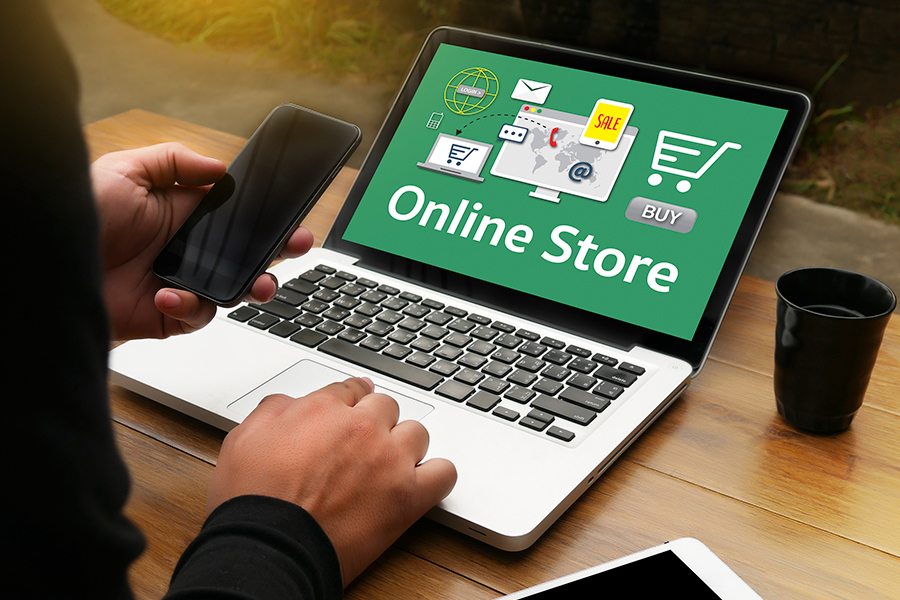Hello!
Planning to start an online store is easy; the hard part comes in actually building one. Nevertheless, you can take strategies to get your store up and earning in a few months.
Read on for steps to follow when building an online store
1. Purchase a Domain Name
 In any online store, you need a domain name that will represent your brand. You can connect with domain sellers from sites such as eBay, and from as little as $ 10.00, you can get your domain.
In any online store, you need a domain name that will represent your brand. You can connect with domain sellers from sites such as eBay, and from as little as $ 10.00, you can get your domain.
Regardless of the sellers, they should show you’re a traffic chart of the domain; the chart should be for over one month. You could also ask for server logs to check on the traffic.
2. Register Your Business
 Once you have purchased a domain, you will need to register your business and get a vendor’s license if you make taxable sales.
Once you have purchased a domain, you will need to register your business and get a vendor’s license if you make taxable sales.
Similarly, if you are building a nonprofit company, you will have to register the incorporation and file articles for a charitable license.
Other matters such as legal business will require an attorney’s assistance for a thing like domiciliation. Hiring an attorney may be costly, but it saves you more in the long run. Without a permit, other vendors may not work with you.
3. Choose Web Hosting Platform
There are various Web Hosting platforms in the market, such as Shopify and WIX. Depending on your needs, go for one that saves on time and money. The platform should be a popular one to help in web design.
4. Hire a Web Developer
 To launch your Onlinestore, you need to design it. In this case, unless you are a specialist in web design, it would be best to hire a professional developer.
To launch your Onlinestore, you need to design it. In this case, unless you are a specialist in web design, it would be best to hire a professional developer.
Preferably one with extensive experience in developing websites and graphic design. The developer should tell you how long it will take to get the website up and running; they should be experienced in building a store that meets your preferred ecommerce platform’s requirements. It is advisable to research the developer first as you may take longer and incur more cost than intended.
5. Find a Theme
You can look through different theme templates as well as user persona templates to find the one that matches your preferred look and feel for your website.
Downloading a theme saves time than going through the customization process. There are some sites where you can find different templates, such as Themeforest.
6. Add Your Products
After you have set a theme for your store, it’s time to add your products; you can break down your products into 3 parts; product description, images, and categories. With an online store builder, you are in control of your products.
 You set the:
You set the:
- Name
- Price
- Category
- Weight and dimensions
- Fling such as eBooks
However, different e-commerce builders have different settings for product uploading.
7. Select Your Payment Method
This helps you convert visitors into leads. You are not limited to one payment mode; you can link several methods such as PayPal, MasterCard, visa, etc.
 There are 3 payment options, namely:
There are 3 payment options, namely:
- Merchant account and payment gateway; you connect your sales to your bank account.
- Payment gateway packages; you use software that links the sales to the card processor.
- Simplified credit card payment processing; integrate a service with your store checkout. Set Your Shipping Option
Different shipping options depend on your store builder; some have free shipping, flat rate, rate by order price, real-time quote, and local pickups. You also have to set your address and the address of your shipping destination.
8. Review and Publish
 Once all the steps and requirements have been followed to the letter, you need to review your store.
Once all the steps and requirements have been followed to the letter, you need to review your store.
Do thorough checks of everything to ensure you have done it correctly, set details like language, time zone, etc. The text is online to ensure it’s working as intended; you can now publish it once that is done.
Conclusion
In building your Online Store Australia (www.onlinestore.com.au/), ensure to adhere to the entire stated steps, from purchasing a domain to testing and previewing it. Choose the platform that best serves your needs and budget, and finds a web developer who will help you meet your timeline.
Also read:
- How to Create a Professional Poster as a First Timer
- Startup Trying to Sell Lasso Gun to Capture Unruly Kids In Schools
- How to Use Chrome Remote Desktop
Thank you!
Subscribe to our newsletter! Join us on social networks!
See you!






